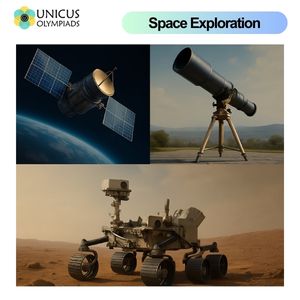

The exploration of space has been one of humanity's most fascinating and ambitious endeavors. Over the past century, technological advancements have allowed us to extend our reach far beyond Earth, using a variety of tools like satellites, telescopes, and rovers. These devices have played crucial roles in enhancing our understanding of the cosmos, gathering vital data, and helping scientists answer questions about the universe. In this article, we will delve into the functions of satellites, telescopes, and rovers, exploring how they contribute to space exploration and the knowledge we gain from them.

Satellites are objects that are intentionally placed into orbit around a planet, moon, or star. They can be either natural, like Earth's Moon, or artificial, which are created and launched by humans. Artificial satellites are launched into space for a wide range of purposes, including communication, weather observation, scientific research, Earth observation, and even military use.
Satellites have revolutionized our understanding of space by allowing us to observe distant objects, gather data on other planets, and communicate across vast distances. Some key ways satellites aid space exploration include:
Telescopes are instruments used to observe distant objects in space. Telescopes can detect various forms of electromagnetic radiation, such as visible light, infrared, and radio waves. The primary goal of a telescope is to gather light from distant celestial bodies and focus it to create an image, which can be studied to understand more about the universe.
Telescopes have been fundamental in advancing our knowledge of space by allowing us to observe distant celestial objects. They help us explore the universe in several important ways:
Rovers are robotic vehicles designed to explore the surface of other planets, moons, or celestial bodies. Unlike orbiters or landers, which remain stationary, rovers are mobile and equipped with wheels, allowing them to travel across the surface of planets and moons to study their terrain, geology, and atmosphere. Rovers are typically equipped with cameras, scientific instruments, and tools to gather data and send it back to Earth.
Rovers are essential tools for exploring the surface of other planets and moons. They allow us to conduct detailed scientific research and make groundbreaking discoveries about the geology, climate, and potential for life on other worlds. Key roles that rovers play in space exploration include: